Has Region Hit Maximum Capacity? Some Officials Say Yes
Regional Leaders Talk Traffic and Housing
The Bar Harbor Story is generously sponsored by Paradis Ace Hardware.
NORTHEAST HARBOR—Elected representatives from multiple area towns and staff converged at a League of Towns meeting at the Neighborhood House on Thursday night.
The goals were to revive the group after a bit of faltering attendance during the pandemic, acquaint (and reacquaint) the towns with each other so that they can approach problems effectively and regionally, and to talk about two major issues in the area: housing and traffic.
Noel Musson and Susanne Paul from the Musson Group moderated the meeting, which was also attended by representatives from Maine Department of Transportation, Island Housing Trust, and MD 365.
After opening remarks from Mount Desert Town Manager Durlin Lunt, who is also the League’s chair, over 40 attendees got to work, clusters of select board members, town and city council members, and town managers hunkered over maps and notepads.
It’s an opportunity for people to get together in a way that they might not always get together, Lunt said, and a way to begin to collectively tackle issues that impact the region. And one of those issues is traffic.
TRAFFIC WORRIES
Connecting ferries with Cranberry Island, lack of safe routes for bikes and pedestrians, coordination of public transportation, and the congestion points that begin in Ellsworth and then run all the way through were discussed.
Bar Harbor Housing and Community Planner Cali Martinez talked about engagement of the community, messaging changes, as well as trying to determine the capacity of areas and the current roads, as well as looking at other ways to get off the island that don’t involve the current Thompson Island bridge. They also discussed the emergency route in and out of Southwest Harbor.
The island has exceeded its carrying capacity as has Acadia National Park, as has Bar Harbor, as has the Route 3 corridor, according to Bar Harbor Town Council Vice Chair Gary Friedmann. The more the park accommodates increasing visitor capacity, he said, the more it impacts communities associated with it.
Park Superintendent Kevin Schneider said that the lodging piece is crucial for an entire region. People have to have places to stay for overnight visits, and the more beds to sleep in the more visitors there will be, it was reasoned.
One group led by Tremont Select Board member Kevin Buck talked about traffic circles at Oak Point Road and Jordan River Road intersection as well as at Bar Harbor’s Eden and West Street intersection, a costly solution according to the Maine DOT representative Jarod Farn-Guillette.
Buck’s group also discussed year-round support for a year-round bus system, and the issues with trying to staff and house bus drivers.
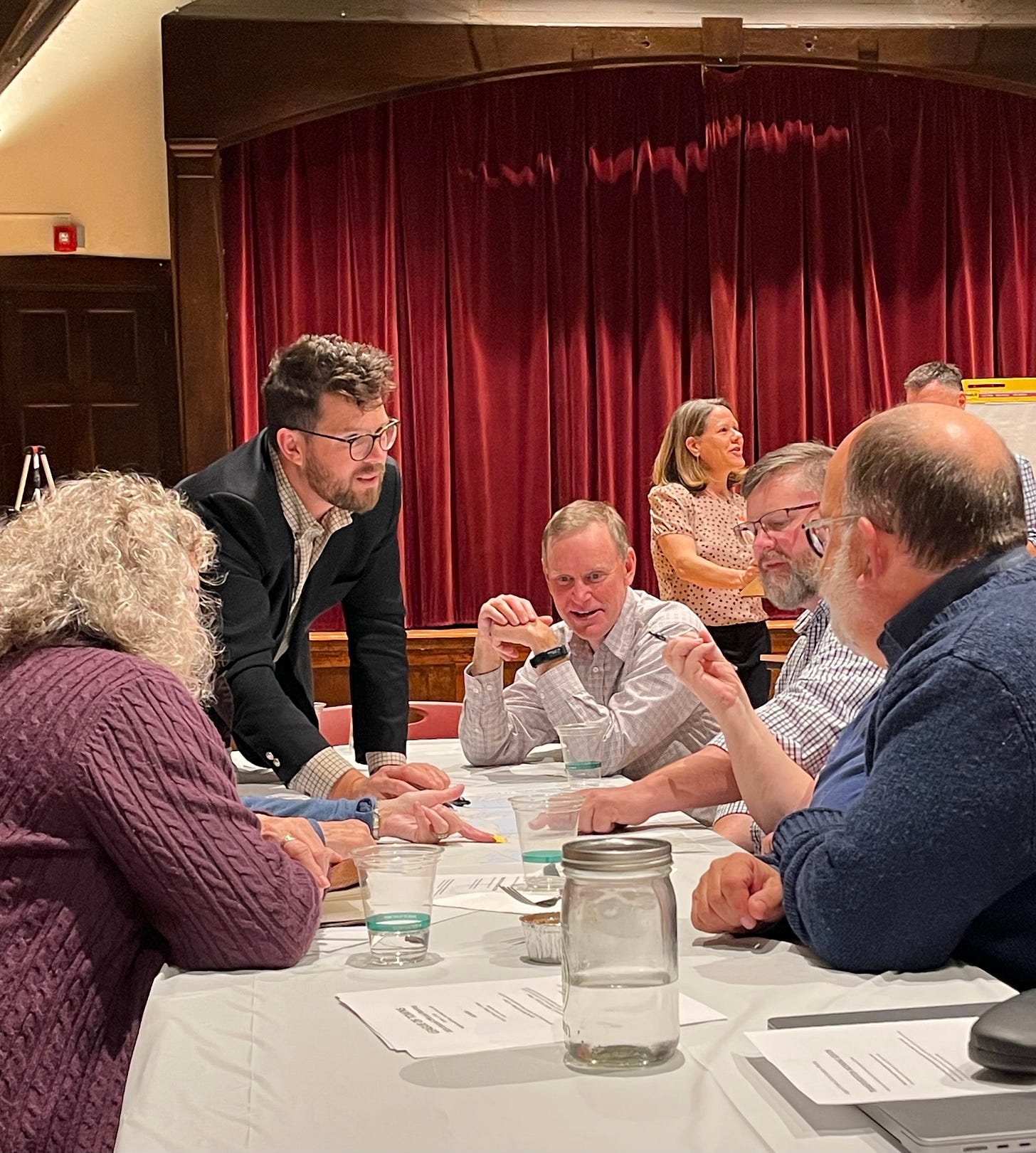
Ellsworth Town Manager Charles Pearce also talked about choke points, bussing, and whether or not building more transportation infrastructure would just bring in more people and the worries of trying to solve one problem only to create another. He suggested working with employers about flexible timing of work hours and transportation tech expansions, which could change how people move about the region.
According to Jarn-Guillette, the DOT is in a scoping phase for an RFP for corridor management plan from Bangor to MDI, to work with a third party consultant to mitigate the issues in the corridor.
“There’s a whole range of things that we as a department don’t have the resources to capture,” Farn-Guillette said.
The Ellsworth crew used to have more than 20 staff, now it has eight. The DOT looks to partner with municipalities, he said, but when it comes to Mount Desert Island there is not a lot of state right-of-ways and “acquiring it is very expensive here.”
Everything is expensive. Traffic circles or rotaries or round-a-bouts are currently $3 million. Traffic lights, which do not last many years, run $600,000 to $800,000.
“Traffic circles are the gifts that keep on giving,” he said.
Farn-Guillette said that if there is data that there is a demonstrated pedestrian need for improvements, the state will improve it. This worried Southwest Harbor Selectman James Vallette who said that on MDI people don’t bicycle because it’s so unsafe. People don’t walk the main roads because it is so unsafe.
There is a tremendous need and desire for walkable, bikeable roads outside Acadia National Park, he said, but “the numbers of people out there are lower because it is so unsafe.”
The data about pedestrians wouldn’t show that. The same would go for bikers.
Jack Stroud of the Mount Desert Islander suggested looking at Jekyll Island, a state-owned tourist location he’d been to in Georgia, which had a dedicated local and commuter lane prior to entering the island. That would not be possible here, the DOT representative said. Lincoln Millstein of the Quietside Journal asked about ferries, which Farn-Guillette said requires a great deal of funding and personnel.
Farn-Guillette was also asked about the percentage of commuter traffic to tourist traffic. He did not know the numbers.
One number that’s recently been released is the amount of vehicles that went on the CAT ferry in Bar Harbor this year. Approximately 20,000 vehicles used the ferry in its 2024 season, an increase of 5,000 vehicles from 2023.
NEXT STEPS
During the Mount Desert Selectboard meeting on Monday, October 21, Selectman Rick Mooers commended the League of Town event, saying it was successful and though he wished there’d been a bit more focus on problem solving.
“It gave us room to begin to create solutions,” Mooers said.
Lunt said the intention of the League in its winter meetings is to work around those potential solutions and come back in early spring, bring the group back together, and work toward regional efforts to help with decreasing traffic congestion as well as increasing home availability for year-round living.
BAR HARBOR DISCUSSION AND NUMBERS
Back in 2023, Bar Harbor Planning Director Michele Gagnon wrote in her report to the councilors, “With all the traffic and congestion, road rage and accidents experienced this summer, we were curious to see what the traffic counts looked like at the head of the island.”
Crash data for the accidents or incidents of road rage were not included in the report.
The data for those counts do not show an expected increase of traffic, but a 5.7% increase between August 2019 and August 2023 and a 4.56% increase between August 2022 and this year.
She said the peak hours in January are between 6-7 a.m. and then 3 p.m. in the afternoon. The peaks in August occur later in the morning and then again at 3-4 p.m.
The average workday has more traffic than the weekend. The morning peak traffic is also more than the afternoon peak traffic. However, the data is coming from the traffic light at the beginning of the island. In the morning, not all vehicles funnel through that light. They do in the afternoon.
At that Bar Harbor meeting, Councilor Kyle Shank asked for the variance on the numbers on traffic, saying that “because they are averages, we don’t know the averages or standard deviation,” which makes him not know whether there is a statistically relevant difference.
Another aspect is that if traffic is jammed, the cars aren’t moving. If the cars aren’t moving because of an accident, those cars aren’t counted at the normal time they’d pass through.
Gagnon said that there is supposed to be a corridor study through Ellsworth to MDI. And that tweaking the 12 signals in Ellsworth and three more toward the island should help.
Recently, the MaineDot has indicated it will be taking control of the street lights along that corridor, monitoring them from Augusta.
“There’s a lot of things going on right now that we can keep our finger on,” she said of state projects, including getting the needed improvements earlier in the state’s queue.
At the time, Friedmann said traffic at the head of the island is the cruise ship crisis of 2023, “We should look at it the same way as cruise ships.” He said the steady growth of transient accommodations of all types including short-term rentals is contributing to the traffic.
Bar Harbor received the Safe Streets for All Planning Grant in 2022, which awarded the town with over $200,000 to support the creation of a Transportation Safety Action Plan. The town has contracted with Stantec to assist with the Safety Action Plan creation process.
The project is funded by the United State Department of Transportation. There’s a national push to reduce series injury and fatal crashes. The goal is to collect the data, create a draft plan, present it to the public, and then use that plan to create changes that will make those walking, driving, biking, skateboarding, and scootering on the streets safer.
For every 100,000 people, Hancock County sees 18 vehicular-related deaths. Between 2016 and 2020 there were 49 fatal accidents in Hancock County. Those are overall accidents, not just pedestrian and vehicle or bicycle and vehicle.
RIPPLE EFFECTS
Others at the League of Town meeting worried about ripple effects of traffic if hotels are built outside of Bar Harbor and Mount Desert Island. Ellsworth was recently proclaimed as a great place to buy a short-term rental.
Bill Trotter wrote in the Bangor Daily News of a new hotel proposed in Ellsworth, “The proposal to build a 16,000-square-foot, 83-room Home2 Suites on High Street comes as officials in nearby Bar Harbor, where most tourists visiting Acadia National Park stay, continue to question how many more visitors the town can handle.”
The four-story structure is proposed by the Witham Family, which has hotels in Bar Harbor and Ellsworth.
“The increase in tourists to the area has resulted in more of them staying in Ellsworth, either at local hotels or at vacation rental properties. The city, whose population has expanded rapidly in recent years, has had some growing pains as residents have raised concerns about new developments or businesses in their neighborhoods, but there has been little-to-no discussion about general restrictions on growth or certain types of business,” Trotter wrote. “Developers are also building higher-density long-term housing in Ellsworth for area residents, who often find themselves priced out of towns with more oceanfront property.”
All photos: Carrie Jones/Shaun Farrar/Bar Harbor Story
LINKS TO LEARN MORE
https://barharborstory.substack.com/p/will-they-or-wont-they?utm_source=publication-search
https://irma.nps.gov/DataStore/Reference/Profile/2299764
https://www.maine.gov/mdot/grants/raise/docs/2024/acadia/Merit%20Criteria%20Narrative.pdf
There is a GIS Map available for you to share specific locations and intersections around Bar Harbor that are worrisome, link here
Bar Harbor’s Safe Streets for All page
If you’d like to donate to help support us, you can, but no pressure! Just click here.
If you’d like to sponsor the Bar Harbor Story, you can! Learn more here.



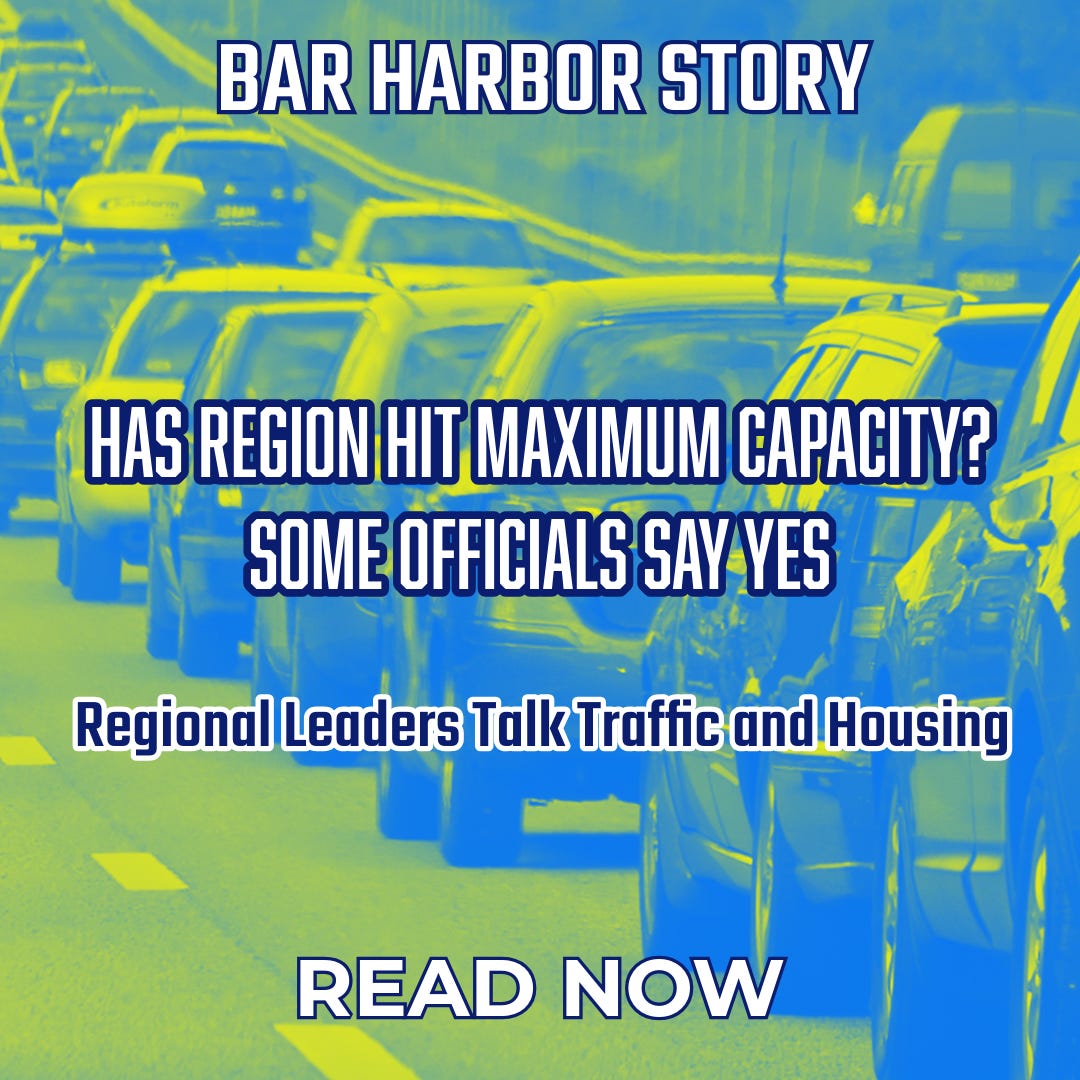

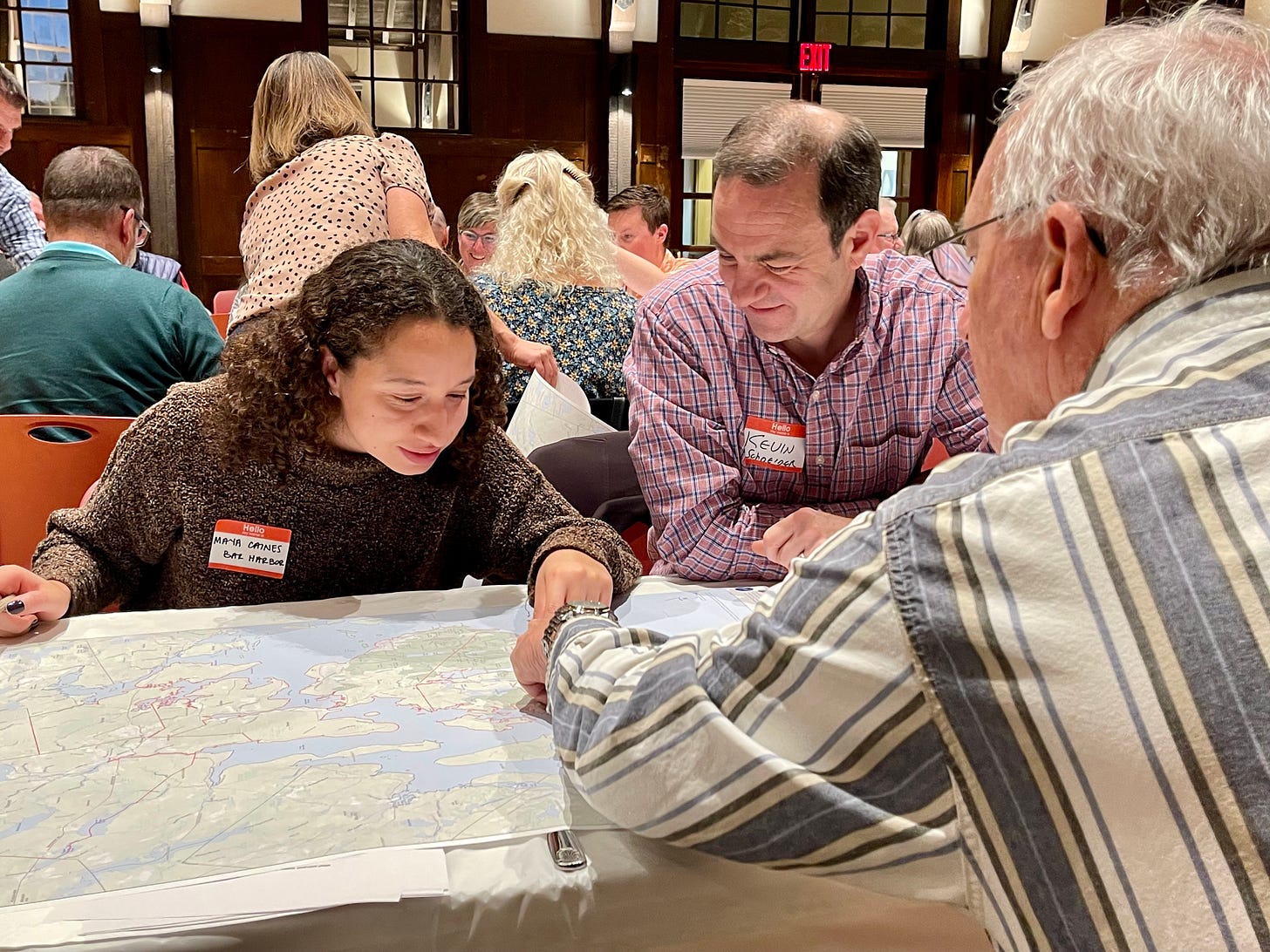

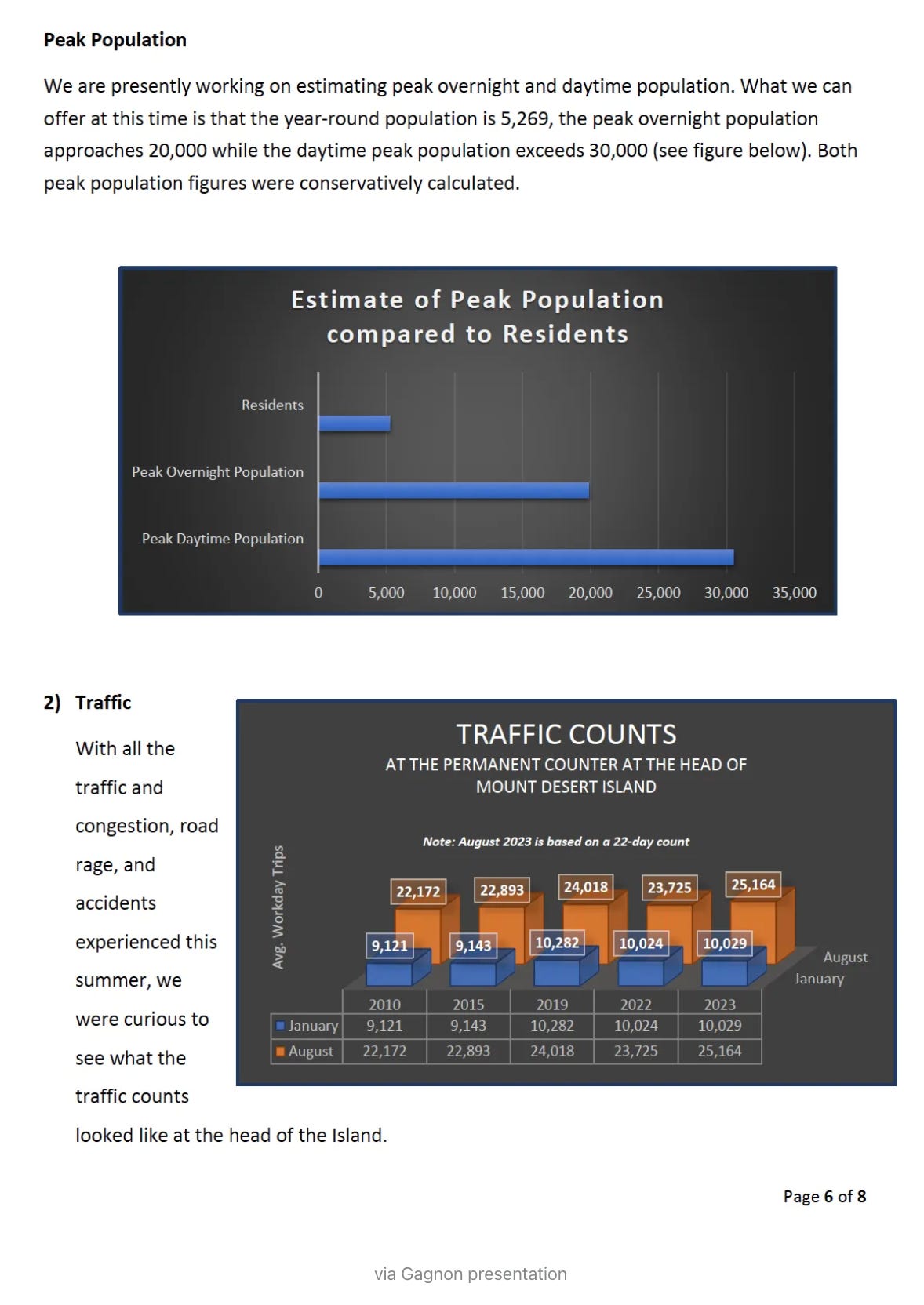


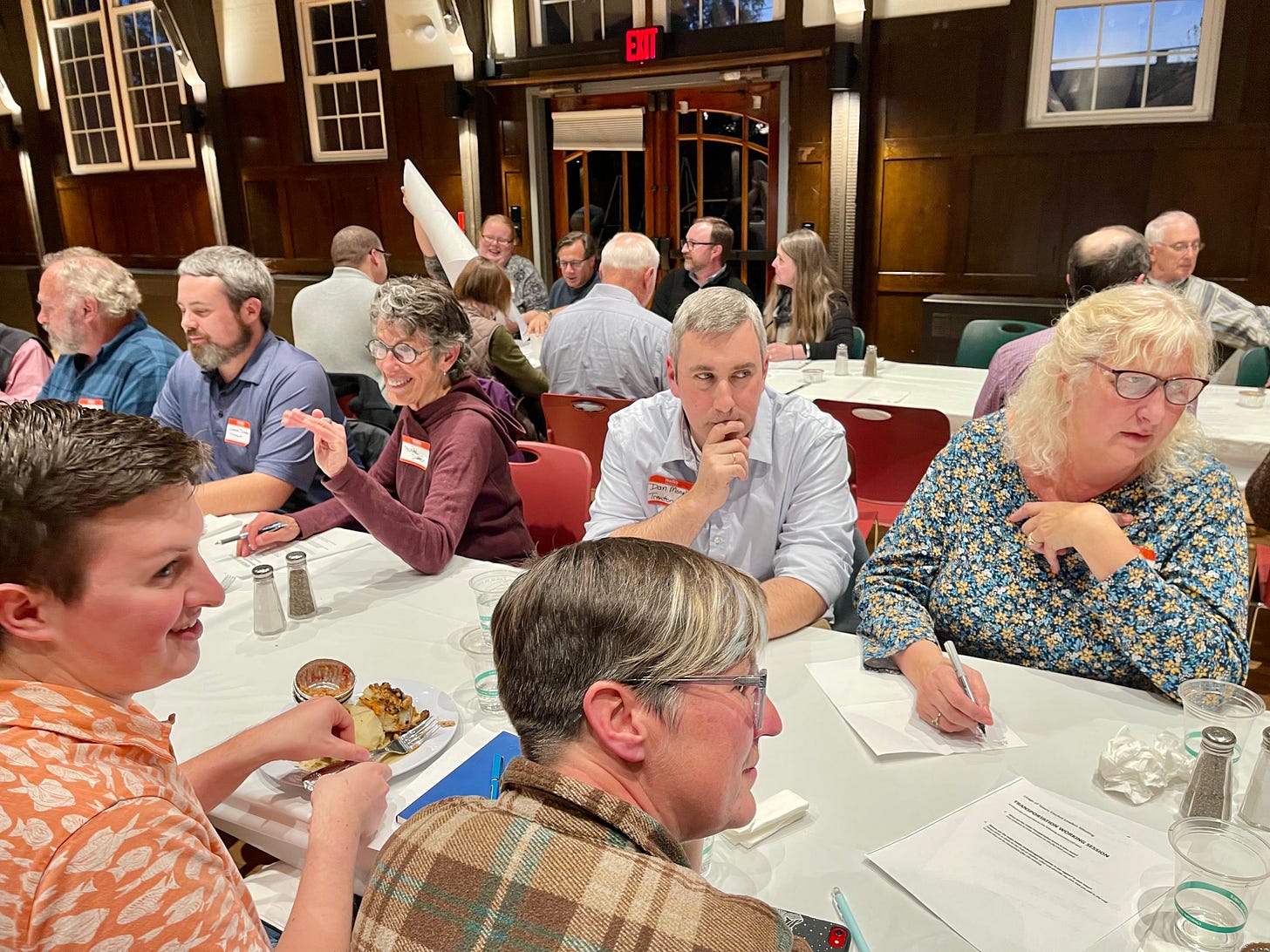
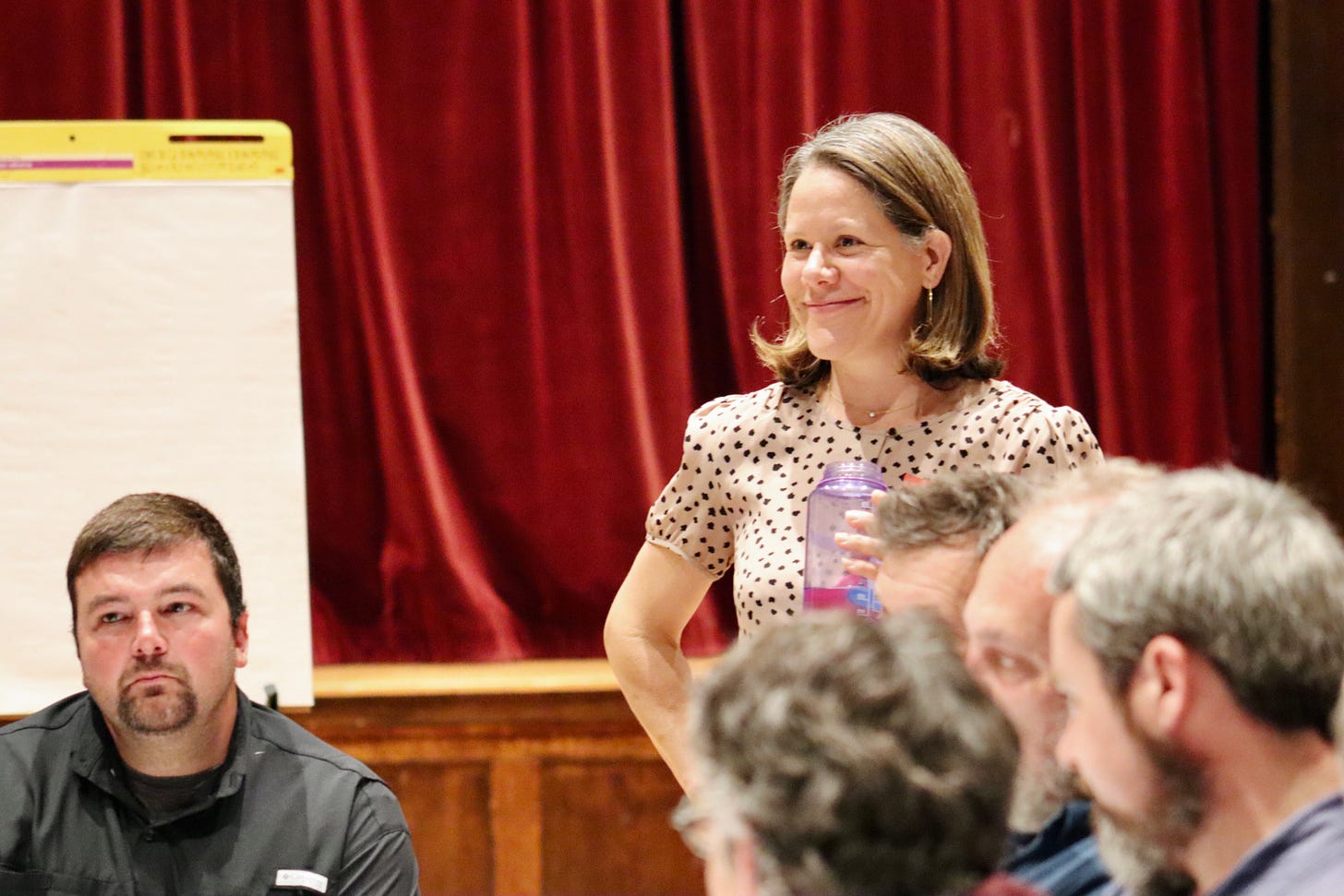





Creating more sleeping capacity is not a solution. The park visitation had doubled in 10 years. More places to stay encourages more visitation. When will the visitor experience be so compromised that it isn't enjoyable? I think we are there. When we have guests they are shocked and when people who have been coming for years are also shocked at the lack of amenities (restaurants stretched beyong capacity or closed). When most of the overnight stays were either hotels or week (or two week) rentals, not that many years ago, the visitation seemed enough to support local businesses and people had places to live. With the advent of AirBNB and others, those short term stays became more and more dominant. Now they have consumed the entire real estate market. Bar Harbor has taken steps to slow that but other towns have not. A recent listing for a 3 bedroom home in Mt Desert for over $900,000 is just one example. No one is fooled into thinking that is priced for anything except someone who will monetize it as a short term rental. This is a classic case if you build it, they will come. And they came and came and came until that was all that is left. But I also want to say for every buyer of a $900K tiny house, there is a seller.